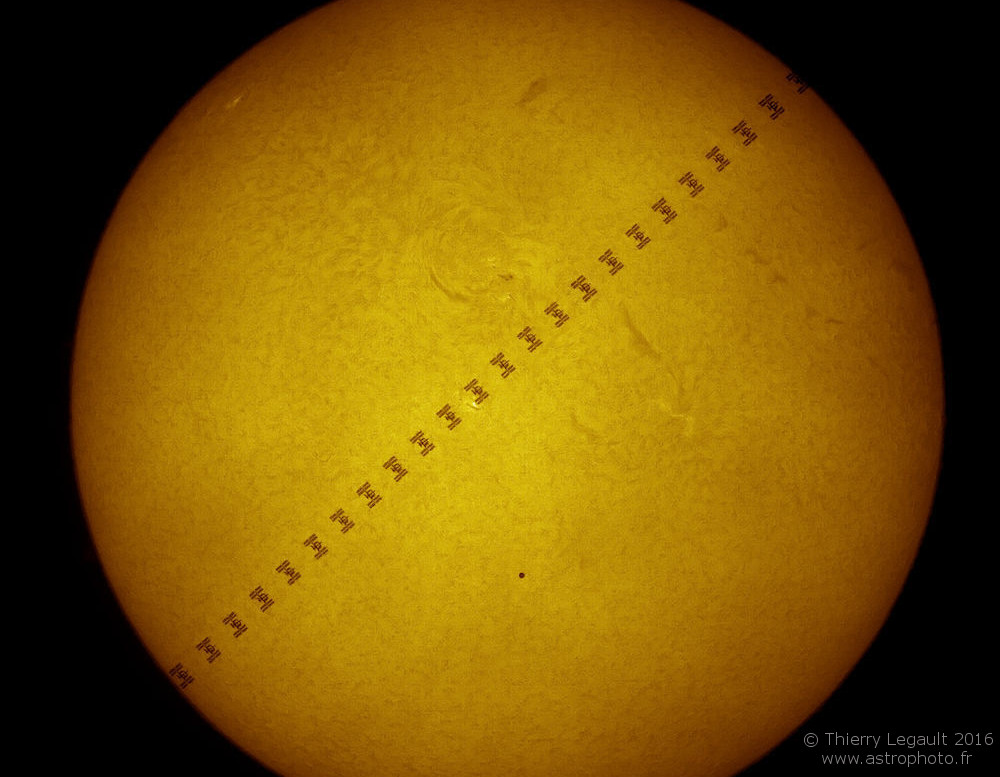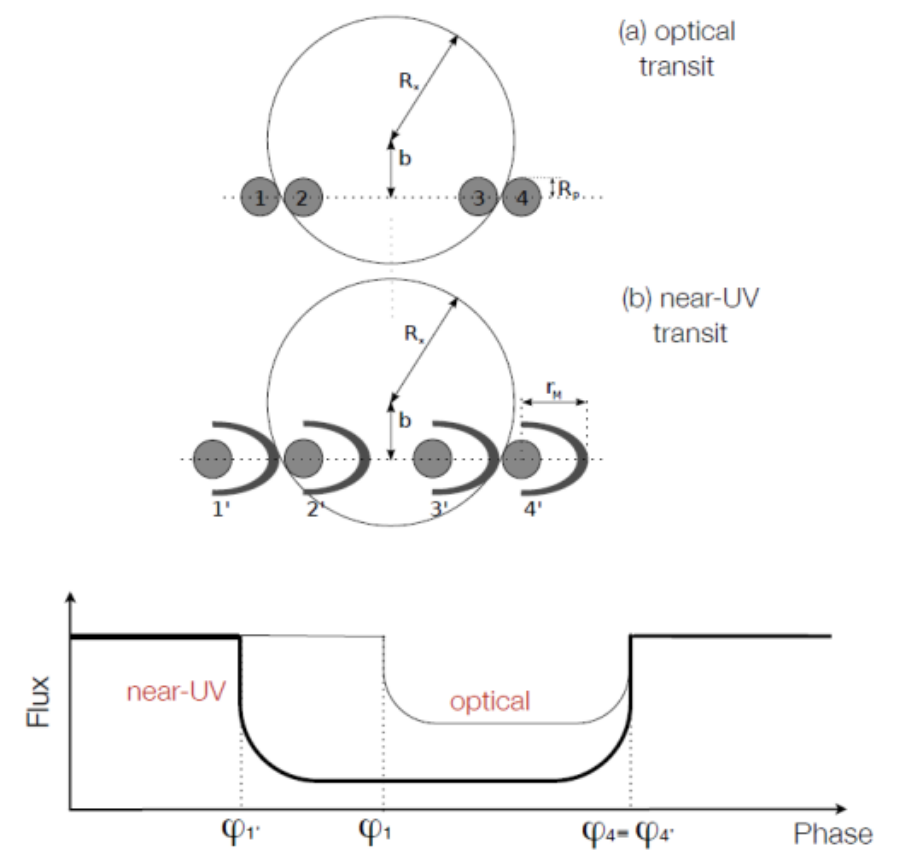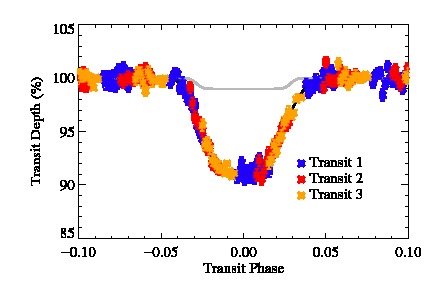What is a Transit?
A transit occurs when one object passes in front of another relative to our line-of-sight, similar to an eclipse. The apparent size of the transiting object only casts a very small shadow on Earth-bound and Earth-orbiting telescopes. It is this small shadow that CUTE is designed to observe. A prime example of a transit is that of Venus across the disk of the Sun in 2012 (below, via the Solar Dynamics Observatory).
While eclipses can be seen without the aid of a telescope and with proper eye protection, transits are usually observed with telescopes or satellites. The International Space Station (ISS) is often seen transiting the Sun as it orbits the Earth.

The ISS transiting in front of the Sun. Mercury is also seen as the small spot in the lower center of the Sun’s disk. Credit: Thierry Legault.

Sketches of the light curves obtained through observations in the (a) optical and (b) near-ultraviolet. CUTE is interested in the change in flux due to an exoplanet’s atmosphere. [Vidotto et al. AN, 332, 1055, 2011]
Primary exoplanetary transits are measured through the comparison of starlight unblocked by its exoplanet to the starlight while the exoplanet is in transit. Secondary eclipses occur when the planet passes behind the star, and when observed we see pure starlight. Between primary and secondary eclipses, the planet may reflect a small bit of star light.
The duration of the transit and the measured change in starlight tells us about the relative sizes of the star and planet. Several transit observations, combined with information about the star, can inform us about the planet’s orbital period, star-planet orientation with respect to our line of sight (inclination), star-planet distance (semi-major axis), stellar mass, planet mass, and more. Several ground- and space-based observatories like Kepler and the Transiting Planets and Planetesimals Small Telescope (TRAPPIST) have contributed to the cataloging of these parameters for over 3700 confirmed exoplanets.
Spectroscopy observations add another dimension to these parameters: composition. Spectroscopy allows us to look at individual wavelengths of light, and we can measure the composition of an exoplanet at two points in its orbit. First is through reflection spectroscopy, where observations take place just before and right after a secondary eclipse. The light reflected off of the planet tells us what kind of light the planet absorbs and what kind it reflects. The second is transmission spectroscopy, which is obtained during a primary eclipse. If the planet has an atmosphere, some of the starlight will be absorbed by the atmospheric gas and some will the transmitted. Measuring the change in light between an eclipse and a non-eclipse provides insights into the composition of the planet and its atmosphere.
CUTE is focused on the studying atmospheres via primary transits. How does the planet’s atmosphere alter the starlight during the transit? CUTE’s target list is filled with hot Jupiters, gas planets similar to Jupiter in mass but with orbital periods of a few days, i.e., very close to their parent stars. The atmospheres of these hot Jupiters may begin transiting its host star just before the body of the planet does, producing a different shaped light curve than if there was no atmosphere (see transit image above). We can learn about the shape, size, and composition of the atmosphere by comparing the change in starlight as the planet passes in front of its star.
CUTE’s Dedicated Study
The majority of transit spectroscopy has been observed in the infrared, which probes the lower atmospheres of exoplanets. The upper planets can be studied through ultraviolet (UV) transit spectroscopy, though only a handful (< 10) of planets have been observed in the UV. The UV data has produced predictions of inflated atmospheres and ongoing mass-loss, as well as potentially asymmetric transit light curves, corresponding to an asymmetric atmosphere. These observations and their interpretations are complicated by three primary factors: 1) the paucity of observed systems prevent a statistical treatment of short-period exoplanet atmospheres; 2) independent analyses of the few available data sets have produced discrepant results in most cases; 3) many exospheric signatures detected so far appear time-dependent.

A simulated transit light curve, filled out over three exoplanet transits. Multiple transit observations are necessary to fill out a single light curve because as CUTE’s view of the exoplanet’s star is periodically blocked by Earth for a portion of a single transit.
CUTE’s advantage lies in its ability to measure several transits of a single exoplanet in the same spectral window, for an ensemble of targets orbiting several different kinds of stars. Larger space observatories, like the Hubble Space Telescope, can produce fantastic spectra of transiting exoplanets, but are constrained by a large number of diverse observational programs carried out in a given year; obtaining five – six complete transits for the approximately 12 primary CUTE targets would require ~1000 Hubble orbits.
CUTE will provide critical time-domain information by observing ~ five – ten transits of the same system. This data will allow for the statistical treatment of exoplanet atmospheres, and relay fundamental insights into the atmospheric processes and mass-loss rates, and may even determine if these planets are magnetized.
